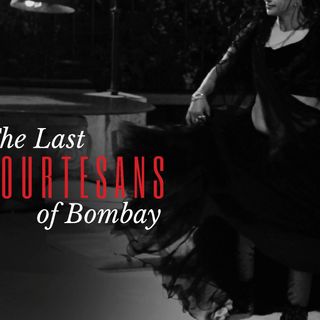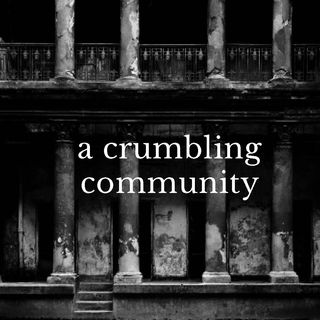
From Open Books to Locked Accounts: Inside the World of Finstas and Alt Twitters
Private social media accounts allow women open expression and refuge from online harassment.

Social interaction often plays out like theater, though it’s theater designed to imitate life. According to sociologist Erving Goffman’s 1959 book, The Presentation of Self in Everyday Life, people interact like actors on stage — playing roles to influence the audience’s impression of the characters they wish to be, and using the backstage to become themselves again.
On the Internet, this process has been more circular. When the web’s many wonderful applications first snuck into human lives, they became our collective backstage. An individual could go about the roles they played in life, and then come home to pour their thoughts all out into LiveJournals, shady IM rooms, heartfelt emails to pen pals and eventually on social media accounts. Then came the era of carefully curated social media accounts — from the aesthetic Instagram to the just-right witty Twitter, which suddenly turned the Internet into the front stage. Thus was born the finsta (fake Instagram account) and the alt-Twitter — a backstage for the new, front stage-level effort required to maintain an online presence or ‘brand.’
Finstas and alt-Twitters are locked social media accounts to which only a select few, close friends are allowed access. They are preferred over the more traditional diaries and blogs as they hark back to the low-effort creating and posting process reminiscent of the pre-influencer era. A private social account can contain memes, text screenshots, comic ‘ugly’ selfies, videos of people crying, eloquent descriptions of sex lives, emotional breakdowns, risqué photos and controversial opinions that would draw too much negative attention on a larger, public account. The sort of insulation finstas provide makes the social media account a safe space for those more vulnerable to online harassment and offline behavioral policing — women, for instance — to be themselves in a private account maintained in tandem with the public, carefully curated accounts.
Related on The Swaddle:
Instagram Has Diluted Zero‑Waste Living to an Aesthetic
A large following on a public account is also often the motivator for the creation of a private account — especially if the large account belongs to people who use it for work or monetize it.
“I have an alt Twitter account. I use it to bitch about my job and my love life. I have 11k followers on main [account] and I was starting to feel like I don’t have a vent or outlet for my deepest feelings. Which is weird, considering I also journal,” said Sonia Thomas, a journalist, and video creator. One of the major reasons she created a private Twitter account was the anticipation of harassment. She said, “I haven’t been actively harassed as much on main, thankfully. I’ve been immune to [harassment], luckily. It’s fear of it that got me there. My [private Twitter] is a refuge from judgemental people more than harassment, I think?”
Priyanka Paul, an illustrator, poet, and body positivity advocate, echoes the same sentiment. She said, “I post a picture of my face on Twitter; I get 500 hate comments. It’s better on Instagram — lots of love on my public Instagram, actually, even compared to my private Instagram. It’s just I can post seven pictures on my private and not care; I can have them be blurry and not care; I can have them be incredibly ridiculous and not care; because my private Instagram is solely for myself and my public [account] — maybe not. I’m trying to put a message out into the world; my voice is valued, and I don’t want to be frivolous with it.”
People who have public accounts also feel a certain expectation, or even self-obligation, to behave a certain way in public accounts because of the responsibility that accompanies influence or a ‘work’ account. According to Thomas, a certain group of people one does have to perform a personality for — “Like my colleagues. And people who think I’m cool, but I’m not. [The performance] doesn’t affect my mental health. But I do feel stuck. The boundary is just based on knowing that not many people will want to hear about the fact that some days are worse than the others. Or my active sex life.”
Paul adds, “A huge audience I have on my main is 13- to 16-year-old young girls … so I would never post about smoking or drugs, so as to give out some idea that these are cool things to do. I make sure I don’t set a bad example, in a way?”
The evolution of separate private accounts points to the relative uselessness of privacy features built into social media platforms — especially for individuals with public accounts that have a large number of followers.
Not following back someone known to you is a common guilt trip,pruning a large number of followers by soft-blocking (forcing another person to unfollow you by blocking and unblocking) is exhausting scouring a large number of followers to add into a list of curated close friends for Instagram stories is also exhausting. Blocking accounts that inflict abuse and spam often doesn’t work, as reporting methods on Twitter and Instagram often confuse and dismiss violent abuse as benign,and because a troll can always make another, or 10 other accounts to continue spewing vitriol. A number of celebrities have dealt with vicious abuse on Twitter and Instagram — a particularly egregiousdisplay of which was when Milo Yiannopolous bullied Ghostbusters actress Leslie Jones off Twitter via a barrage of racist, violent abuse.
Related on The Swaddle:
The Thing that Drew Me to Social Media Also Led Me to Quit It
Plus, a separate account acts as an archive more than a social space. “Why finstas? Because [of] the permanency a post allows you — it’s like a journal or diary of memories you can go back to often, not so much with stories on a close[friends] list,” added Paul. A private archive of moments is nicer and quicker to flip through rather than digging through the deluge of abstract stories and posts on the main account to find a genuine moment, which makes a private space open to a select few quite special.
While finstas aren’t 100% private, due to the existence of screenshots, screen-recordings, and the occasional untrustworthy friend, they’re still the least-worst option out there to let loose, break down, overshare and underwhelm. That is, until the front stage catches up with the finsta, morphing it into another curated performance of exclusivity, and the hunt for refuge continues.
Aditi Murti is a culture writer at The Swaddle. Previously, she worked as a freelance journalist focused on gender and cities. Find her on social media @aditimurti.
Related


The Last Courtesans of Bombay
